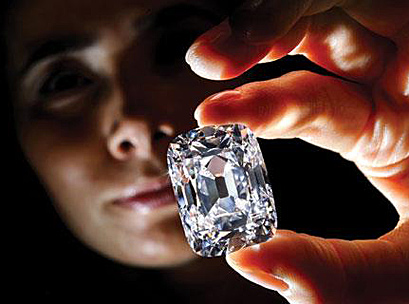A surge in diamond consumption by the growing middle classes in China and India will push global sales to $26.1 billion in value in 2013, from $15.6 billion last year.
Research firm Bain & Company found that diamonds consumption has grown rapidly in China, with annual sales approaching $9 billion, making it the world’s second-largest market for diamonds after the US.
Approximately 90 per cent of affluent households (those with annual incomes of $15,000 or more) own at least one piece of diamond jewellery, and most own multiple diamonds.
The custom of giving diamond engagement rings is catching on quickly in China as diamonds have strong emotional and spiritual resonance for Chinese women.
The research says the diamond retail scene is highly fragmented, with independent and local chain stores dominating the mass- and premium-mass segments, which account for 95 per cent of annual sales.
Foreign prestige retailers such as Tiffany, Cartier and Bulgari dominate the high end of the market. Most foreign players spend five per cent or more of annual China sales on advertising to build brand awareness and identity.
Diamond retailers are expanding rapidly, focusing more on second-tier and third-tier cities where personal incomes are growing quickly and consumption patterns mirror those of larger cities, where diamonds are wildly popular.
Meanwhile, India, which is a home to the world’s first diamond mines and the center of the cutting and polishing industry, is ranked as the third-largest global diamond market, with annual revenues approaching $8.5 billion.
Diamonds are the country’s second fastest-growing discretionary purchase, trailing mobile phones.
Many Indians have adopted Western holidays such as Christmas and Valentine’s Day, and diamonds are the most desired gift on such occasions. Diamond engagement rings are also a well-established custom in the country.
It has been found out that about 90 per cent of India’s affluent women own diamonds, with most receiving their first diamond to celebrate a wedding, engagement, birthday or anniversary.
Rings and earrings are the most widely owned jewellery types. Many women, even in lower-income strata, also have necklaces, pendants and bracelets in their repertoires.
Indian women have well-developed tastes in diamonds, valuing a stone’s clarity ahead of its cut, size and color. They favor different designs for different occasions, opting for evergreen looks for everyday wear and trendy styles for lighthearted occasions such as birthdays and Valentine’s Day.
Traditional solitaires, usually set in a yellow gold band, are by far the preferred design for weddings and engagements.
India has an astonishing 300,000 jewellery stores, seven times more than in the US and six times more than in China. Independents dominate the retail space, but large national chains are making inroads.
Gitanjali, Cygnus and Diti are the biggest chain-store players and are claiming a growing share of the mass and premium-mass segments.
Retailing is in the midst of an expansion drive, focused on second-tier and third-tier cities such as Nagpur and Vadodara, where incomes are rising and consumers are clamoring for luxury goods.
While for Chinese women, diamonds are associated with eternity, Indian women associate diamonds with strong monetary status as well as positive emotional charge.
GB






